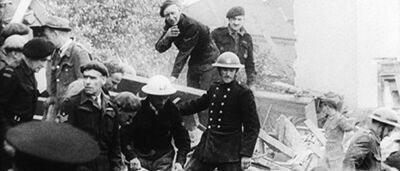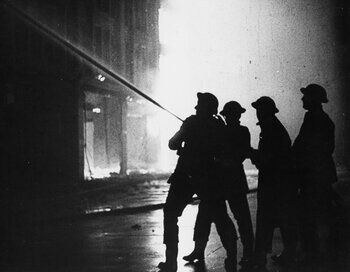
Life during the Blitz
Although the Blitz did not start until September 1940, air raid precautions in Britain began as early as 1938 with 40 million gas masks given out and millions of cardboard coffins made.

From September 1939 adults and children were evacuated from towns and cities to rural locations considered to be safe.
On 7 September 1940, one year into the Second World War, the German Luftwaffe unleashed a wave of bombing raids on London, killing hundreds of civilians and injuring many more.
Over a period of 267 days London was attacked 71 times. Raids also took place in other British cities including Birmingham, Liverpool, Bristol, Hull and Glasgow.
Air raid shelters
Sirens would regularly sound to warn people of possible air raids enabling them to find shelter as quickly as possible. During September 1940 approximately 177,000 people in London sought shelter in stations on the London Underground while others took shelter in their homes in Morrison Shelters and in their gardens in Anderson Shelters.
Made out of corrugated iron, more than 20 million Anderson Shelters were built with each shelter being able to hold up to six people.
The air raid shelters gave rise to a spirit of camaraderie and community amongst the British public as they endured frequent nights of heavy bombing.

Rationing
Less than a third of the food available in Britain at the start of the war was produced at home. Enemy ships targeted incoming Allied merchant vessels, preventing vital supplies including fruit, sugar, cereals and meat, from reaching Britain's shores.
People were issued with ration books containing coupons that shopkeepers clipped out when people bought food and other items. Although not officially rationed, luxuries such as alcohol and cigarettes were limited.
Blackouts
There were blackouts throughout the Blitz with people covering their windows with dark heavy curtains to block out any light and at night, streetlights were turned off to prevent enemy aircraft from being guided by the lights coming from towns across Britain.
The Blitz continued until May 1941 when Germany turned its attention to Russia.
Discover more about the Blitz
Listen to this episode of our All Stations podcast series two to learn more about what it was like for people to living through the Blitz.